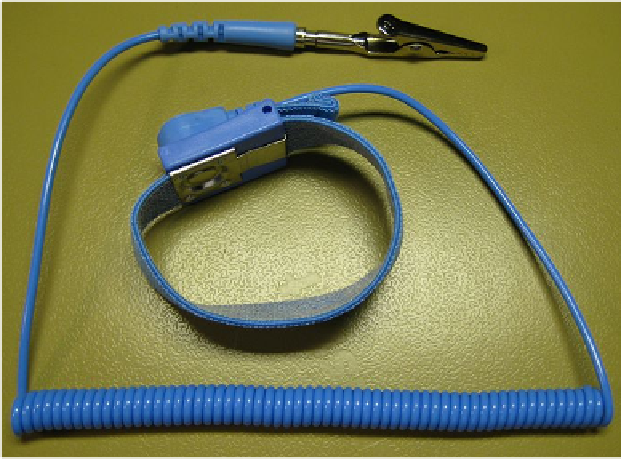Hardware Reference
In-Depth Information
The work surface can also make a difference. Try not to work in a carpeted area; tile
or linoleum is preferred. Carpet, especially nylon carpet, tends to generate ESD the
same way that nylon clothing does.
Grounding both the person and equipment can eliminate ESD risk, because any ESD that
builds up can bleed off to the ground harmlessly. To ground yourself, wear an
antistatic
wrist strap
as you work (see Figure 5.4). At your end of the strap is a Velcro bracelet
containing a diode that fi ts against your skin. At the other end is an alligator clip that
you attach to the grounding pin on an electrical outlet (the round, third hole) or to some
other grounding source. If no grounding source is available, attach the clip to the PC's
metal frame. For maximum ESD prevention, wear an antistatic wrist strap whenever
you're working on a PC with the cover off, especially when handling circuit boards.
FIGURE 5.4
An antistatic wrist strap can help prevent ESD damage.
Photo credit: Kms
Another way to minimize ESD risks is to touch the metal frame or power supply of the
PC frequently as you work. Doing so doesn't ground you, but it does equalize the electrical
charge between you and the PC so there is no difference in potential between you and the
components you touch. Do this every few minutes to make sure no built-up occurs.
Antistatic mats
are also available. These sit on the work surface and perform the same
function for the parts on which you're working as the wrist strap does; the mat has a cord
that attaches to the ground pin on an outlet.






